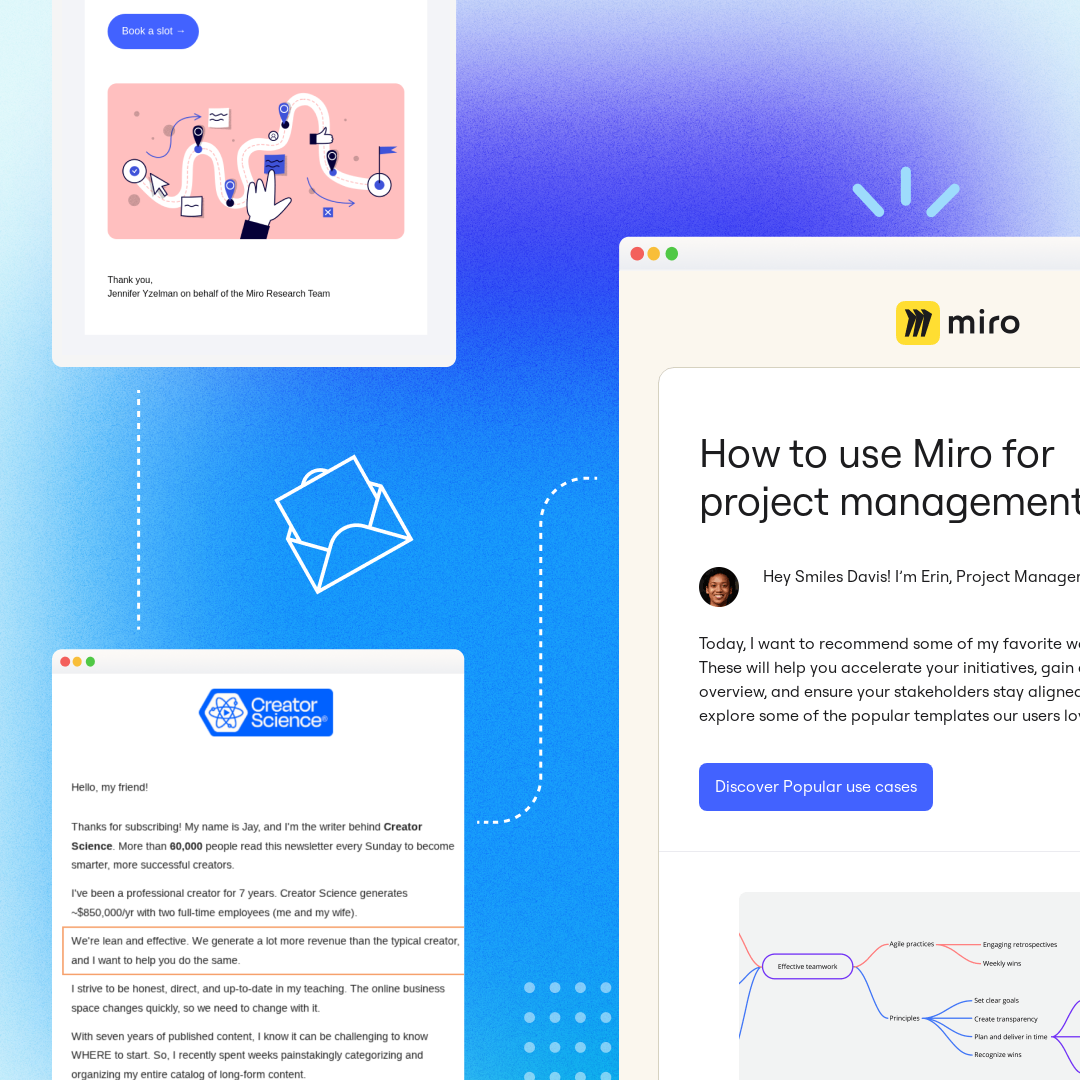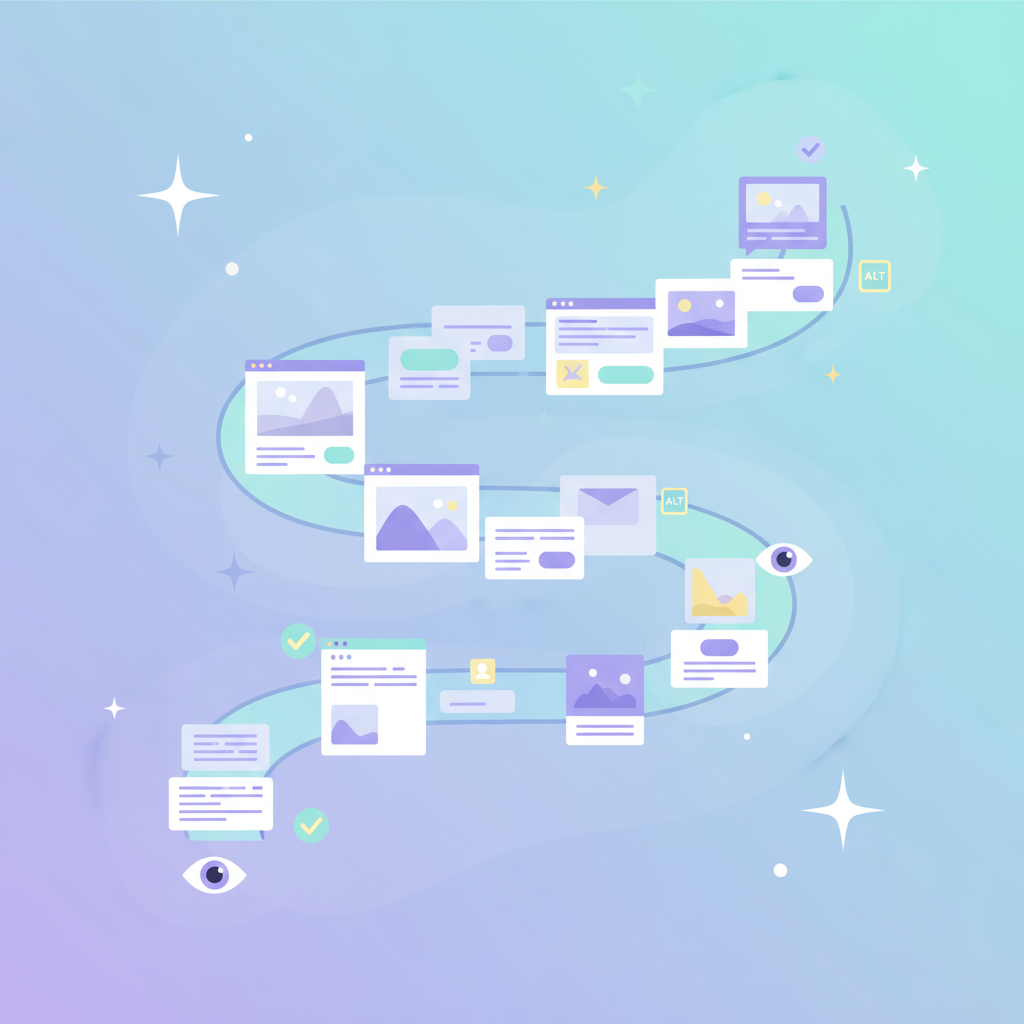
While new marketing platforms pop up everyday, marketers are not tossing email to the side. While some claim that Gen Zers don’t use email and refer to other platforms such as TikTok and Instagram to make purchases, a recent poll by Media Post reports 53% of Gen Zers still enjoy getting weekly emails from their favorite brands.
Jennifer Harmon, Content Strategist and Creator of Convince & Convert, confirms that email marketing is likely to only become more important as changes continue to happen with paid media, cookies, and permissions.
With a ROI of $36 for every dollar spent and 79% of marketers naming email as one of their top effective channels, the idea that email is dead is ... well, dead.
The continuing dominance of email marketing
It isn’t luck or routine that keeps email marketing alive and thriving, but rather it's unique advantages:
- Unparalleled reach: Email marketing provides a direct channel to connect with vast audiences worldwide. With an expected 4.73 billion email users by 2026, marketers can leverage automation tools to send personalized emails at optimal times regardless of geographical boundaries or time zones.
- Personalization at scale: In addition to being able to reach audiences far and wide, email marketing allows marketers to personalize messages at scale. With segmentation and automation tools, personalization requires minimal manual intervention - a benefit not offered by other digital platforms.
- Cost-effective growth: Unlike other marketing methods that may require investment in print materials or ads, email campaigns can be executed at a fraction of the cost. As the audience base grows, With the right tools, marketers can easily scale email production as their audience base growth.
Key trends shaping the future of email marketing
As we delve into the growing need for marketers to not only catch the attention of their audiences but also to connect and drive conversions, there are three key trends shaping the future of email marketing:
AI-driven personalization
According to Hubspot, segmented emails have 30% more opens and 50% more clickthroughs than general emails send to your mass audience. The need for segmenting and personalization aren’t new but the way we approach them is.
AI today is used as a power tool to collect relevant data about users. For instance, it can use customers’ purchase history or viewing history to email them personalized product recommendations. This is increasingly important, with 71% of consumers now expecting personalized interactions from brands, but it is only the tip of the iceberg.
63% of marketers of marketers leverage AI to help them get more done, faster. ChatGPT or bullt-in AI solutions tools like Beefree’s AI copy assistant make it easier to find the right messaging for email campaigns, by optimizing existing copy or tailoring copy to unique audiences they might not know much of yet.
Interactive email experiences
Interactive email content achieves 73% higher click-to-open rates, according to Martech Advisor. Interactive email content includes surveys, polls, carousels, gamification elements, and more. Email builders and third-party solutions have made integrating such content easier than ever allowing the every-day marketer to up their email content without the need for developers.
Microinteraction such as small animations or a CTA hover are growing in popularity.These small elements make an mundane task such as reading emails, an interactive experience.
Navigating the challenges and seizing opportunities
While innovation brings a world of possibilities, it also brings a few challenges for marketers. The rapid pace of emerging trends and their life cycle makes it hard for marketers to quickly adopt and stay ahead of the competition without causing email fatigue. Additionally, as highlighted by Norton, 69% of users are more concerned than ever about their data privacy, which in turn makes them more wary of what they engage with.
Email fatigue
Frequent emails result in email fatigue leading to reduced engagement rates, or worse case scenario an increase in unsubscribe rates. To combat this, it's crucial to strike the right balance in email frequency to your industry and audience. While finding the the right frequency is not a one size fits all, we recommend auditing your emails sends.
Start small with sending the right emails at the right time like when a user first subscribers or completes a desired action. Slowly integrate additional content and test its performance. Each email should serve a specific purpose and provide valuable and relevant content, this is where segmentation and AI-driven personalization becomes your best friend.
Privacy concerns
While for marketers the ability to collect a wide range of data on user demographics and behaviours is gold, for users this brings concerns. Marketers can mitigate these concerns by making consent and transparency regarding data collection and usage easily understood with an option to opt-out. Not only does this allow users to make informed decisions, but in the long term allows for increased trust and loyalty.
AI biases
While biases is not exclusive to AI, the rise of Artificial Intelligence has brought this concern to the forefront of marketer's mind.
Because AI is influenced by the historic data it processes and individual prompts, it may inadvertently perpetuate responses based on stereotypes and biases patterns. This can lead to content that is skewed and alienates certain segments of the audience.
Much like anything else that is public facing, we recommend implementing internal process to detect biases. This may mean having a review process in place to cross-reference AI outcomes with multiple folks with different background and experiences. Another suggestion is to regularly audit AI prompts keeping diversity and inclusivity top of mind to ensure fairness and accuracy.
Beyond the inbox: Integrating email marketing with other digital marketing strategies
As valuable as email marketing is, 72% of customers say they prefer to engage with brands through multiple channels. By coordinating email marketing efforts with other channels, marketers can build engaging and cohesive experiences for customers. In the same way that all conversations with a friend feel the same - whether they’re in person, over text, or on the phone - a holistic digital marketing strategy allows marketers to create space for immersive interactions that meet customers where they're at.
The future of email marketing lies in its integration with other marketing channels. Some standout ways to do this include:
- Landing pages: For marketers, landing pages helps lead customers to take a desired action, increase conversion. For users, this cohesive integration offers a smooth transition from email to a browsing experience where they can find more information that helps them make educated decisions.
- Social media: Marketers can leverage the power of social sharing, UGC, and email marketing to amplify their reach and establish a balance of nurturing new and existing audiences. For customers, this means a seamless way to engage with one brand regardless of the channel they prefer, fostering a sense of community.
- Content marketing and SEO: Email campaigns can drive traffic to valuable content resources, such as blog posts, whitepapers, videos, and infographics. For customers, this means having an easy way to acquire new knowledge and interact with the brands they love.
Embracing the future of email marketing
Change is inevitable in all aspects of life and marketing is no exception, but this doesn’t mean you need to throw out your old playbook. Rather, it's about recognizing how the landscape if evolving and adapting. As mentioned today, some of the key areas driving the future of email marketing include AI and automation, multichannel marketing, and the emphasis on enhanced interactivity. While these might seem like heavy strategies to implement, know that you don't have to do it alone.
At Beefree, we're dedicated to empowering marketers with the tools and resources needed to thrive in this dynamic environment. Our intuitive HTML email builder, AI copy assistant, and wide range of email and landing page templates support marketers in the search of innovative solutions to respond to the shift in the market's need.
To find out more, sign up for Beefree today!



